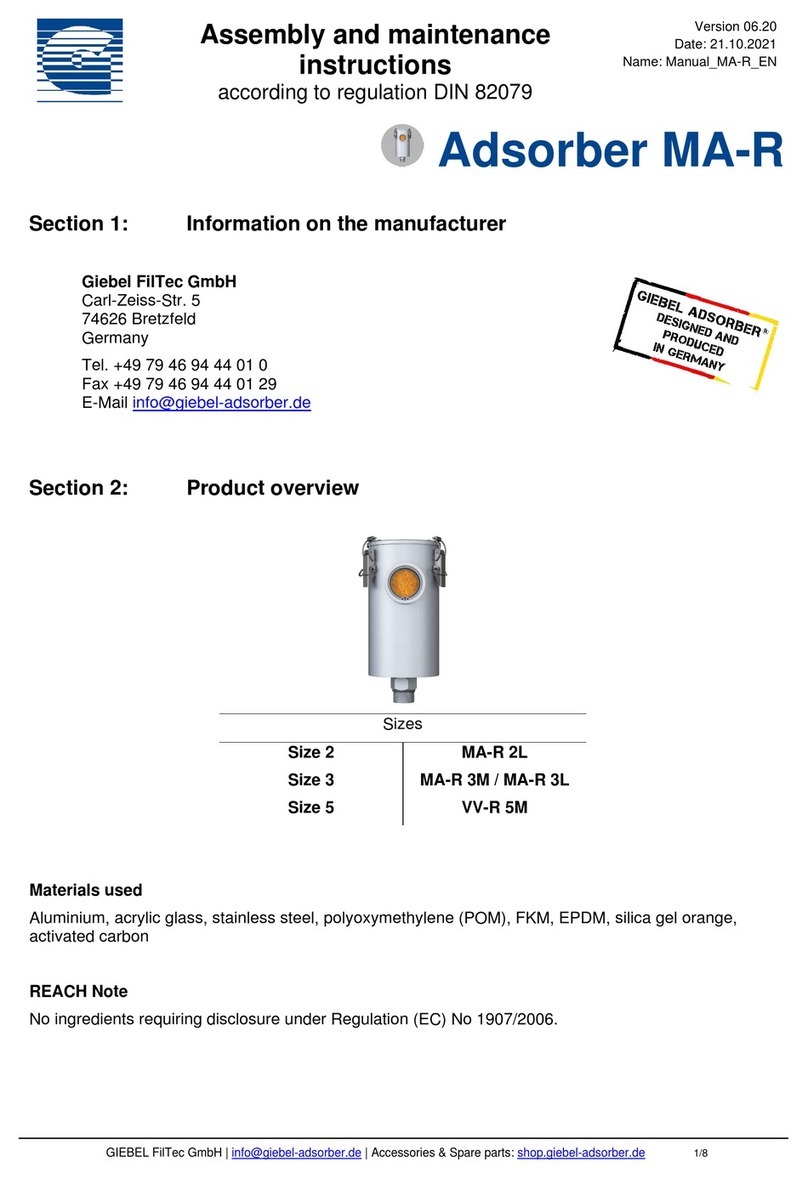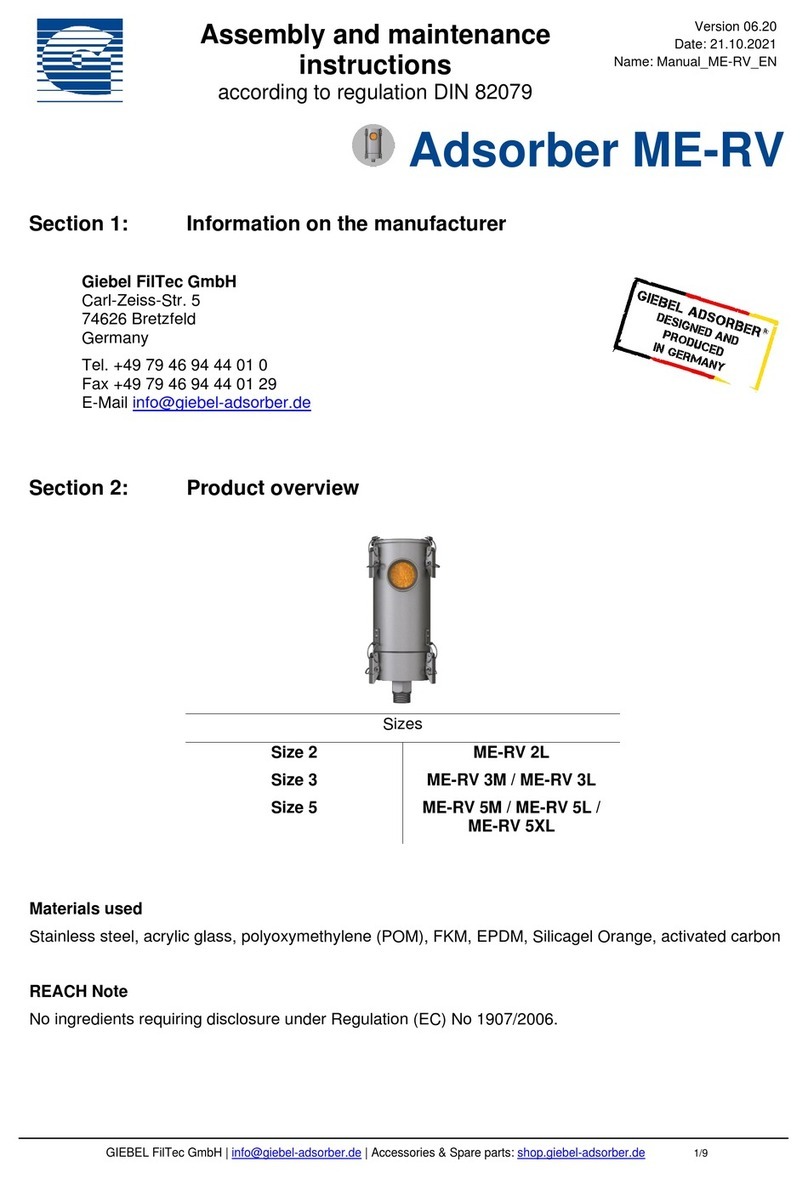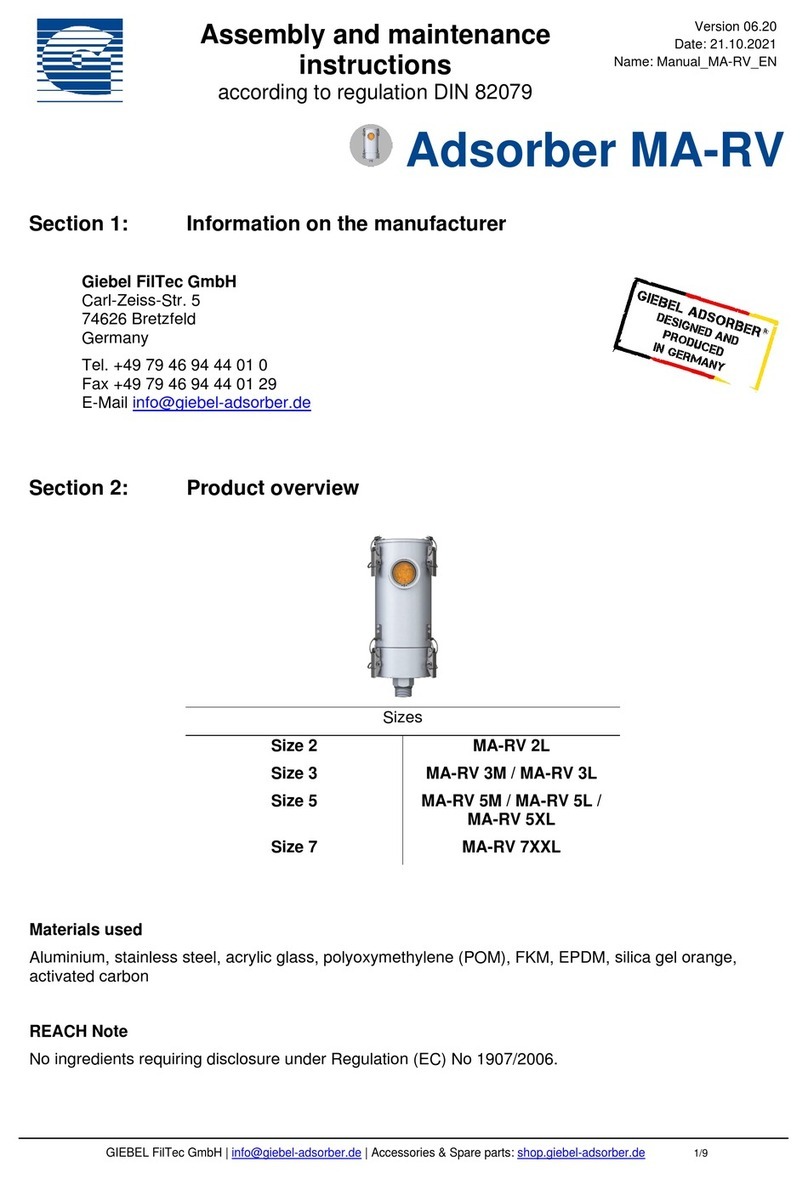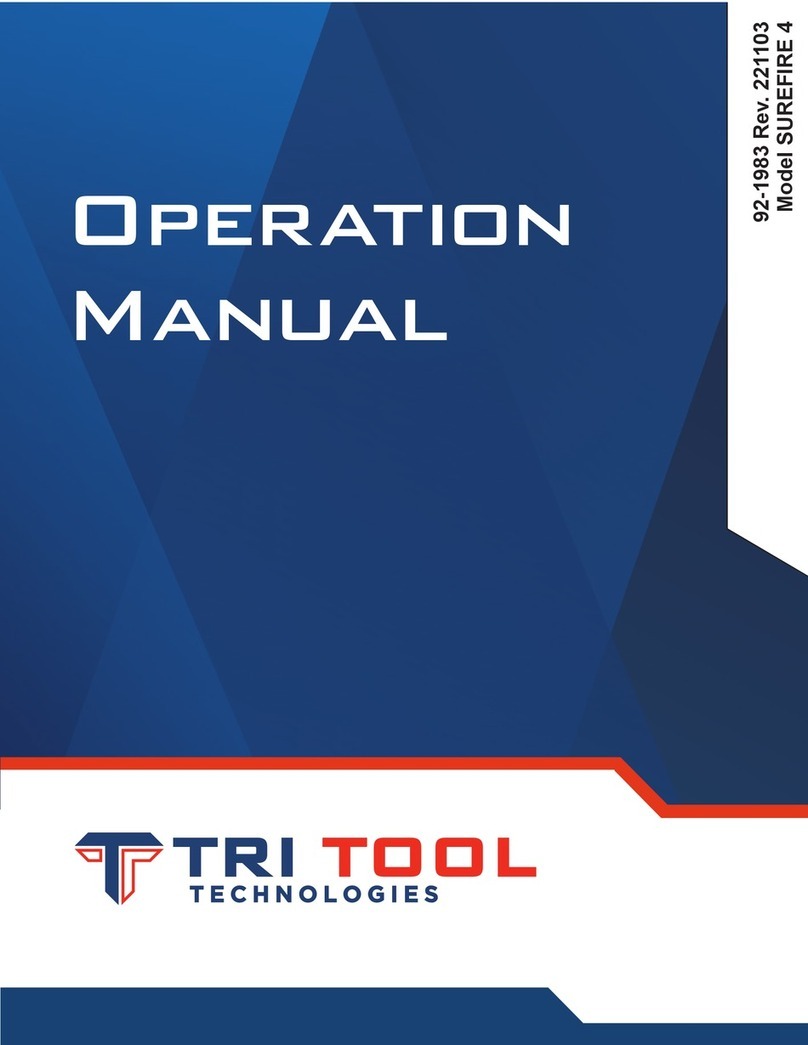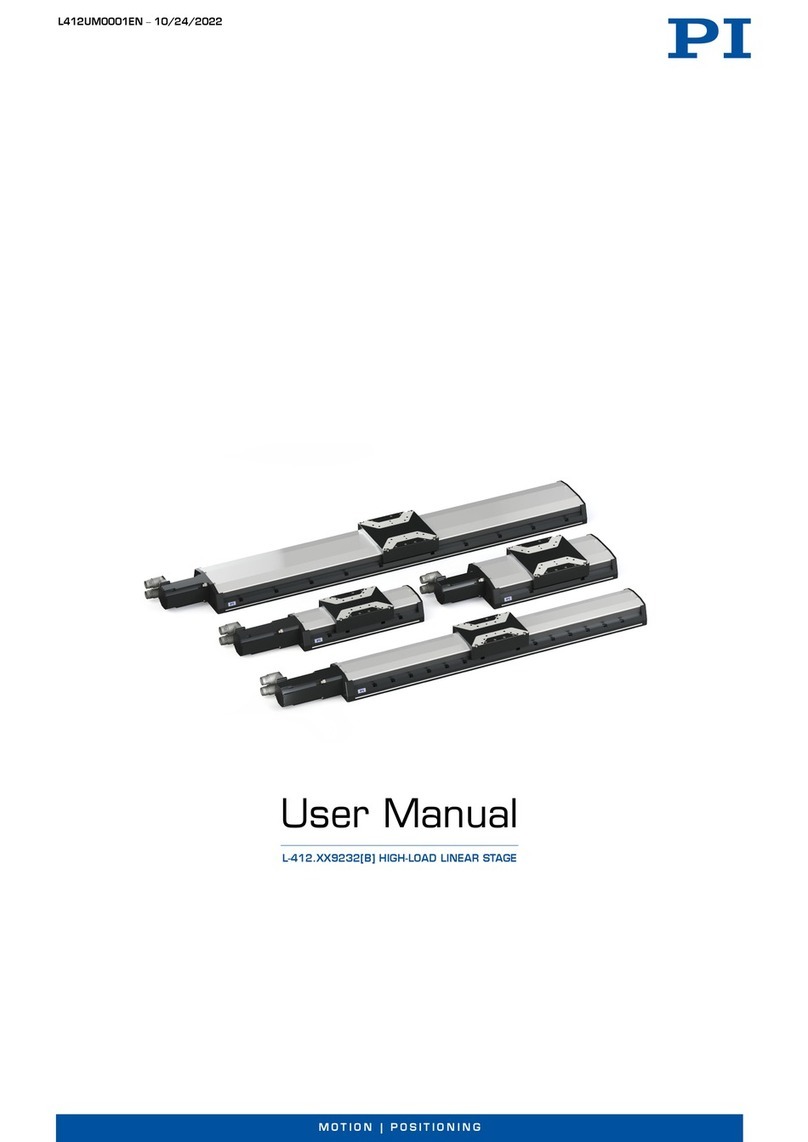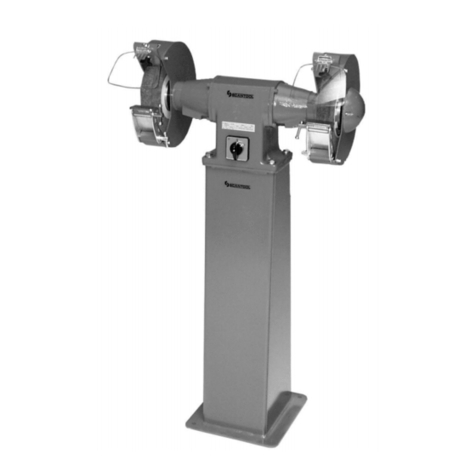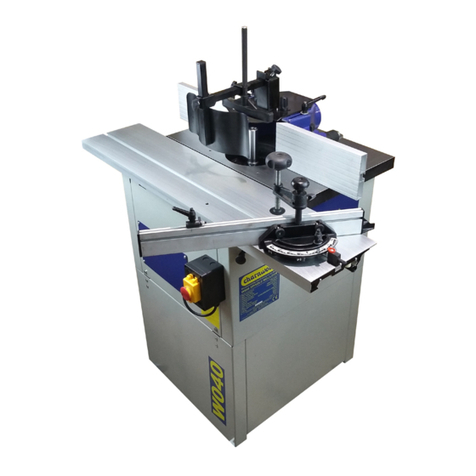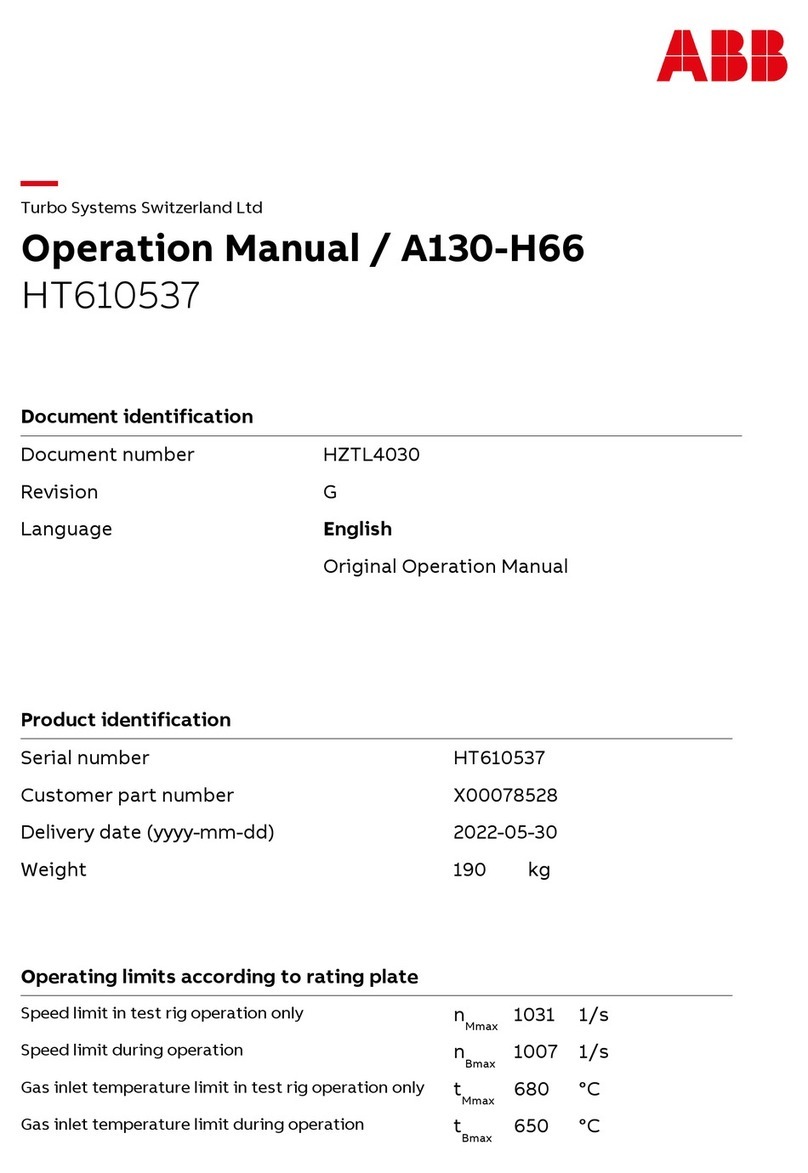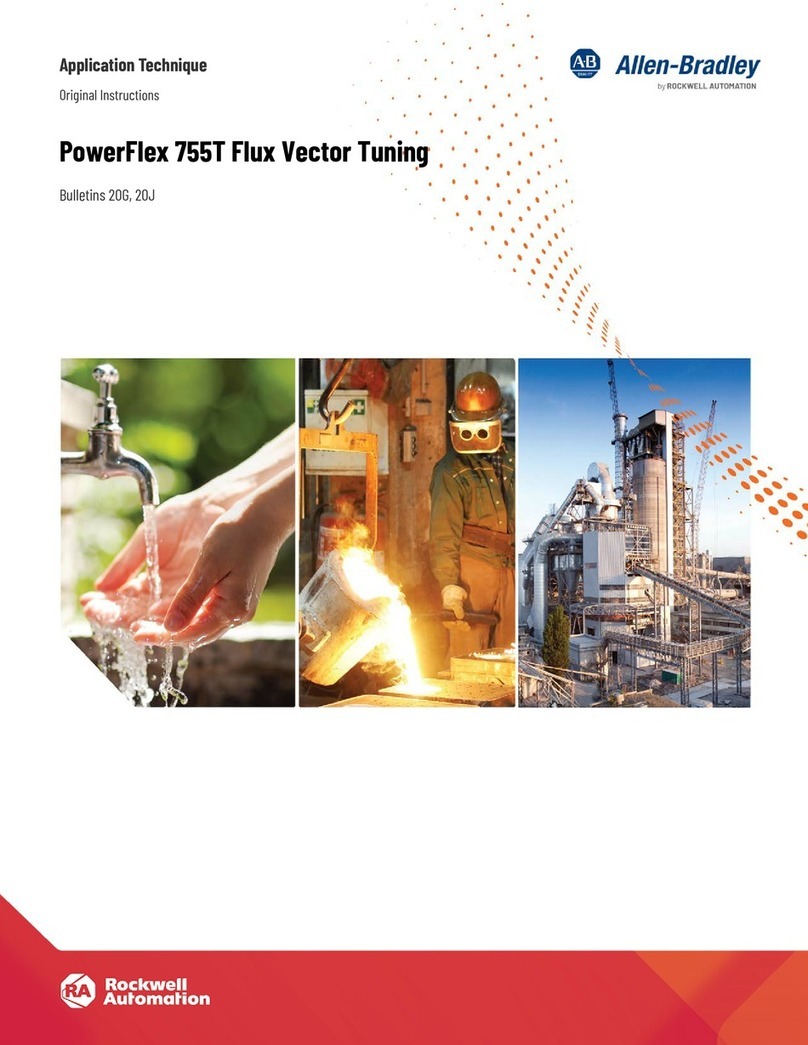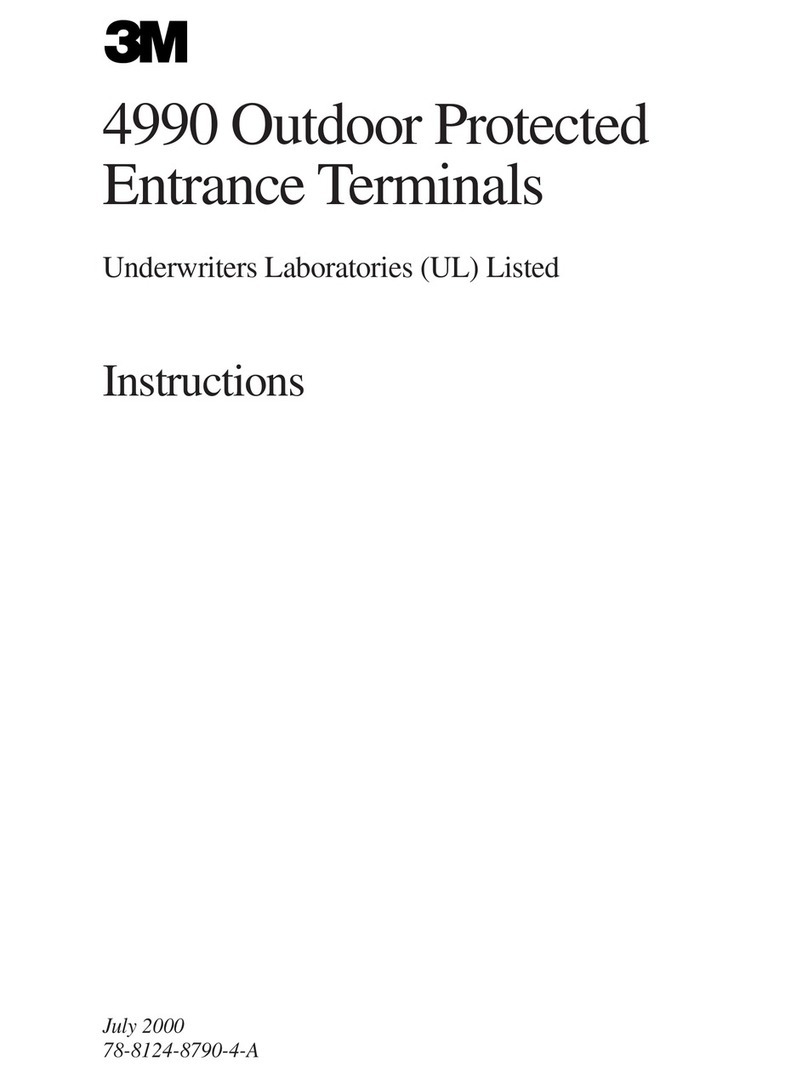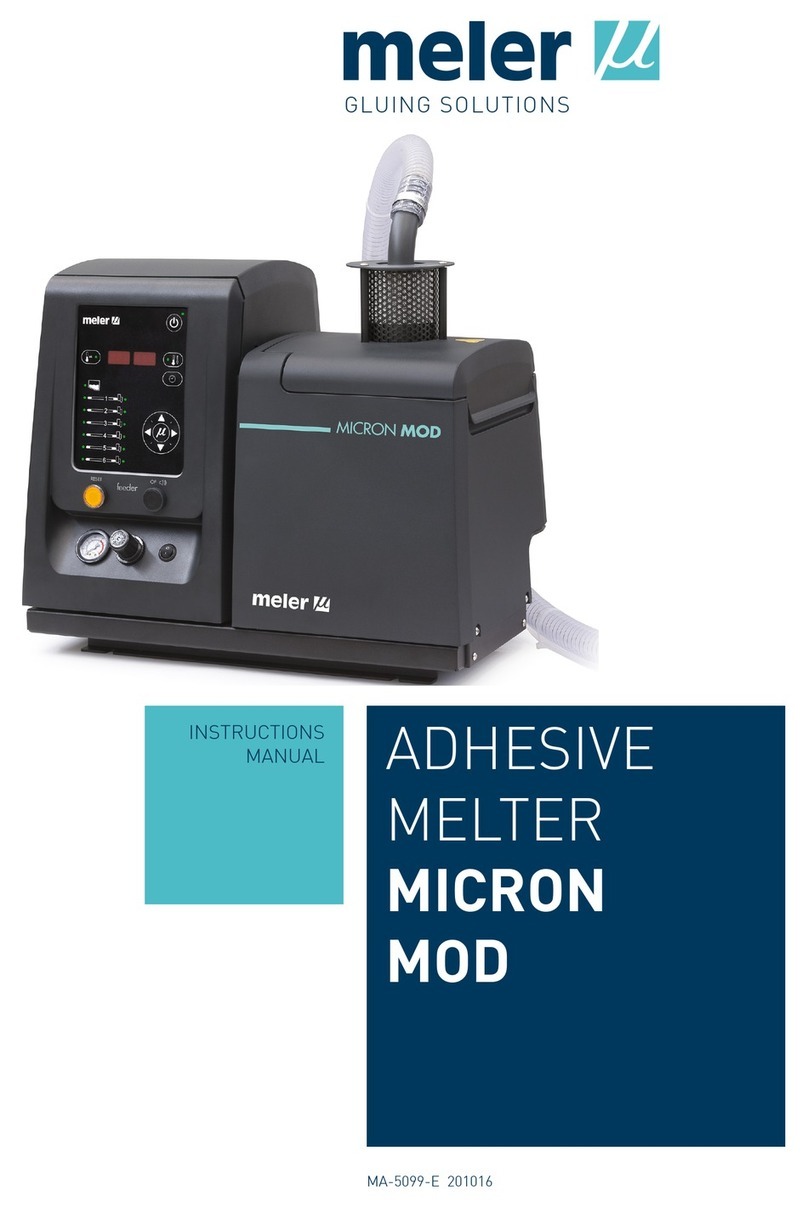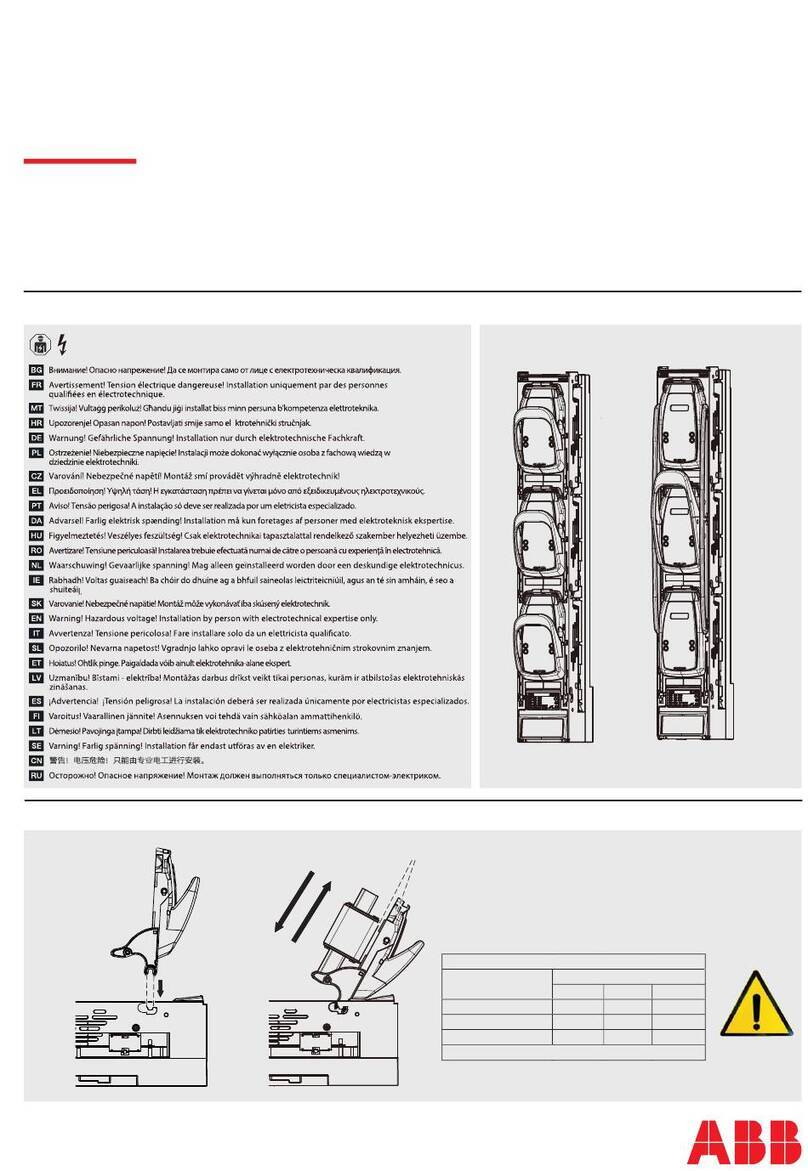Giebel Adsorber TB-RV Quick guide

Assembly and maintenance
instructions
according to regulation DIN 82079
Version 11.21
Date: 08.11.2021
Name: Manual_TB-RV_EN
GIEBEL FilTec GmbH | info@giebel-adsorber.de | Accessories & spare parts: shop.giebel-adsorber.de 1/9
Adsorber TB-RV
Section 1: Information on the manufacturer
Giebel FilTec GmbH
Carl-Zeiss-Str. 5
74626 Bretzfeld
Germany
Tel. +49 79 46 94 44 01 0
E-Mail info@giebel-adsorber.de
Section 2: Product overview
Sizes
Size series 3
Size series 5
TB-RV 3M / TB-RV 3L
TB-RV 5M / TB-RV 5L
/ TB-RV 5XL
Materials used
Acrylic glass, polyamide (PA), stainless steel, aluminum, FKM, silica gel orange, activated carbon
REACH Notice
No ingredients subject to mandatory naming according to Regulation (EC) No. 1907/2006.

Assembly and maintenance
instructions
according to regulation DIN 82079
Version 11.21
Date: 08.11.2021
Name: Manual_TB-RV_EN
GIEBEL FilTec GmbH | info@giebel-adsorber.de | Accessories & spare parts: shop.giebel-adsorber.de 2/9
Section 3: Structure and materials
Usage
Reusable
Housing material
Acrylic glass, PA, aluminum
Adsorbent
Silica gel, activated carbon
Particle filter
Filter element with 2 µm separation
efficiency
Sealing material
FKM
Operating
temperature
-40°C - +80°C
Connection
DIN42562 flange,
DIN42567A/B flange,
DIN42567C G3/4“ / G1“ female
Section 4: Technical data
TB-RV 3M
TB-RV 3L
TB-RV 5M
TB-RV 5L
TB-RV 5XL
Total weight [kg]
2,4
3,1
4,9
6,3
7,9
Adsorbent [kg]
1,0
1,5
2,4
3,5
4,8
Max. water absorption (ml)
400
600
960
1400
1920
Height [mm]
278
378
312
412
512
Case diameter [mm]
110
110
150
150
150
Total diameter [mm]
140
140
181
181
181
Connection
DIN42562
DIN42567A
DIN42567B
DIN42567C
DIN42562
DIN42567A
DIN42567B
DIN42567C
DIN42562
DIN42567A
DIN42567B
DIN42567C
DIN42562
DIN42567C
DIN42562
Valves [IN-OUT]
2 –2
2 –2
3 –3
3 –3
3 - 3

Assembly and maintenance
instructions
according to regulation DIN 82079
Version 11.21
Date: 08.11.2021
Name: Manual_TB-RV_EN
GIEBEL FilTec GmbH | info@giebel-adsorber.de | Accessories & spare parts: shop.giebel-adsorber.de 3/9
Section 5: Assembly and commissioning
1. Lightly oil the connection before screwing it in if it is the female threaded
version.
2. Screw the adsorber together with the pre-installed valve part (ready for installation) to the system.
If the valve part has been unscrewed, make sure that the O-rings are in the correct position.
The outer O-ring must be in the groove of the valve part and the inner O-ring in the groove below
the thread.
Screw well hand-tight.

Assembly and maintenance
instructions
according to regulation DIN 82079
Version 11.21
Date: 08.11.2021
Name: Manual_TB-RV_EN
GIEBEL FilTec GmbH | info@giebel-adsorber.de | Accessories & spare parts: shop.giebel-adsorber.de 4/9
Section 6: Maintenance
Once the silica gel is completely saturated, a replacement kit must be used.
0% →100%
If the color of the silica gel has completely turned over according to the color indicator used, it must be
replaced.
1. Securely grasp the adsorber section and detach it from the lid using the clamps.
2. Remove the gasket in the lid and replace it with the new one.
3. Remove the filter disk and activated carbon disc and empty the
desiccant.
4. Remove the lower foam disc as well.
5. Insert the new foam disc.
6. Fill with fresh desiccant. When filling the desiccant, lightly tap the
housing with a soft object (e.g., ball of the hand) to compact the
filling.
7. Insert new activated carbon disc.
8. Insert the new filter disc and then reattach the adsorber section to
the lid using the clamps.
9. Replace the O-rings between the valve part and the adsorber part.
Make sure that the O-rings are seated in the groove provided for this
purpose.
10. Screw the valve part back onto the adsorber part hand-tight.

Assembly and maintenance
instructions
according to regulation DIN 82079
Version 11.21
Date: 08.11.2021
Name: Manual_TB-RV_EN
GIEBEL FilTec GmbH | info@giebel-adsorber.de | Accessories & spare parts: shop.giebel-adsorber.de 5/9
Section 7: Spare parts and storage
Ordering spare parts
For constant readiness of the adsorber and thus the system, make sure that a spare parts kit, or spare
adsorber is always in stock.
The time required for a complete color change and thus the service life of the adsorber depend on
various factors:
•Number and duration of flow and loading intervals.
•Air flow volume and flow velocity, relative humidity of the ambient air.
•Temperature of the ambient air and the medium to be aerated.
Storage of adsorbers
All articles filled with desiccant are packed airtight. To avoid damage to the desiccant, they must also be
stored in dark and dry rooms at -10°C to +30°C.
Adsorber
Spare parts kit
Desiccant
TB-RV 3M
TB-RV 3L
ET TB-R 3
SOG 4 kg
TB-RV 5M
TB-RV 5L
TB-RV 5XL
ET TB-R 5
SOG 4 kg
Spare parts kit
- activated carbon
- filter disc
- Seals
Example representation of
the spare parts kit
Desiccant
- silica gel
Airtight
packaging

Assembly and maintenance
instructions
according to regulation DIN 82079
Version 11.21
Date: 08.11.2021
Name: Manual_TB-RV_EN
GIEBEL FilTec GmbH | info@giebel-adsorber.de | Accessories & spare parts: shop.giebel-adsorber.de 6/9
Section 8: Disposal
Regeneration
In practice, the most common regeneration method is temperature increase. When desorbing water
vapor from silica gel, the temperature must be above 100°C. For silica gel with color indicators, a
regeneration temperature of 120°C should be maintained to avoid damaging the applied color indicator.
It is nevertheless recommended to use fresh silica gel.
Disposal
At the end of its service life, the device must be disposed of in accordance with the relevant legal
regulations. Metal and plastic parts should be separated and disposed of according to type.
The loaded desiccant Silica gel orange can be disposed of in household waste.
Silica gel orange is not classified as a hazardous substance according to European Union legislation
(Regulation EC No. 1272/2008). It does not require labeling according to EC Directive (67/548/EEC or
1999/45/EC). Silica gel orange is not classified as hazardous to health or the environment.
Section 9: Risk and hazard analysis
1. Humid air flows into the system
Porous seals
Moist air can flow into the adsorber or into the system at the porous points. As a result, complete drying
is not possible and moist air enters the system.
Adsorber part, or O-ring is not seated correctly on the valve part
If the adsorber part is not tight enough (well hand-tight) on the valve part, or the outer O-ring of the valve
part is not seated in the groove, moist air may enter the system at the leaking points.
Saturated desiccant
If the desiccant is saturated, it can no longer absorb moisture. As a result, moist air enters the system.
Zu hoher Luftdurchsatz
If the air flow rate is too high, the contact time between moist air and desiccant is too short. As a result,
moist air can flow into the system.

Assembly and maintenance
instructions
according to regulation DIN 82079
Version 11.21
Date: 08.11.2021
Name: Manual_TB-RV_EN
GIEBEL FilTec GmbH | info@giebel-adsorber.de | Accessories & spare parts: shop.giebel-adsorber.de 7/9
Oil on the desiccant
If too many oil particles get into the adsorber, the oil particles close the pores of the desiccant and thus
prevent the adsorption capacity.
Ambient temperature too high
If the ambient temperature exceeds 80°C, the binding forces in the desiccant decrease. As a result, the
incoming ambient air is only dried to a limited extent.
2. Overpressure or underpressure builds up in the system
Air flow rate too high
Excessive air flow can cause overpressure or underpressure to build up in the system.
Filter element contaminated
The filter unit can become clogged with dirt particles and can thus build up pressure in the system.
Oil on the desiccant
If oil particles get into the adsorber, the gaps in the filling can be filled with oil and the filling can stick
together. This can cause pressure to build up in the system.
3. Adsorber is damaged
Material resistance
When selecting the adsorber, the ambient and operating conditions should be considered. An aggressive
environment or liquid in the vessel can damage the adsorber.
Temperature range
The ambient and operating temperatures should not exceed or fall below the specified range, otherwise
the adsorber may be damaged.
Improper handling
Incorrect or improper handling can damage the adsorber. The recommended installation must be
observed.
Strong vibrations
Strong vibrations of the system can damage the adsorber.

Assembly and maintenance
instructions
according to regulation DIN 82079
Version 11.21
Date: 08.11.2021
Name: Manual_TB-RV_EN
GIEBEL FilTec GmbH | info@giebel-adsorber.de | Accessories & spare parts: shop.giebel-adsorber.de 8/9
Pressure range of the system
The adsorber should not be exposed to overpressure or underpressure of more than 0.5 bar, otherwise
the housing may be damaged.
Cleaning of the adsorber
For cleaning the adsorber, the use of a mild soap in combination with water is recommended. The use of
brake cleaner will damage the adsorbe.
Thread of adsorber and accessories is damaged
When mounting the adsorber on the system, the threads must be slightly
moistened with oil. If the threads are not oiled, this can lead to the thread rubbing
off and getting stuck.
Section 10: Maintenance plan
1. Check seals for wear
Check The O-rings installed on the adsorber must be checked for perfect condition. For this
purpose, the seals on the valve part (2 in total) and in the lid should be checked for
brittleness.
Cycle Semi-annual
Measures In case of existing damages, a new spare part kit, or a new adsorber should be used.
2. Check filter disc for contamination
Check Remove the lid and take out the filter disc. This should be checked for contamination and
should be free of dirt for smooth operation.
Cycle Semi-annual
Measures The filter disc is part of the spare parts kit and should be replaced if contaminated.

Assembly and maintenance
instructions
according to regulation DIN 82079
Version 11.21
Date: 08.11.2021
Name: Manual_TB-RV_EN
GIEBEL FilTec GmbH | info@giebel-adsorber.de | Accessories & spare parts: shop.giebel-adsorber.de 9/9
3. Visual control of the silica gel
Check Visually inspect the adsorber to determine the loading condition of the silica gel. The color
orange indicates that the silica gel can still adsorb water and air is dehumidified. If the
silica gel is completely saturated, the color changes to green or colorless.
If there are oil particles on the silica gel, they close the pores and the adsorption capacity
is reduced. This causes the silica gel to discolor more slowly and unevenly.
Cycle Semi-annual
Measures If the silica gel is loaded or damaged by oil, a new spare parts kit or a new adsorber with
fresh silica gel should be used.
4. Visual inspection of the adsorber
Check The adsorber, incl. connection must be visually checked for damage. Damage can occur
due to various environmental or operating conditions.
Cycle Annual
Measures If the adsorber is damaged, it must be completely replaced to ensure full functionality.
5. Replacing the wearing parts
Check wearing parts, in particular the seals, the silica gel as well as the adsorber housing, must
be checked with regard to their condition.
Cycle Biennial
Measures Regardless of the result of the test, it is recommended to replace the wearing parts by
using the spare parts kit or a new adsorber to ensure smooth operation.
This manual suits for next models
5
Table of contents
Other Giebel Industrial Equipment manuals
Popular Industrial Equipment manuals by other brands

Microcanner
Microcanner MC MAX Operating instructions manual
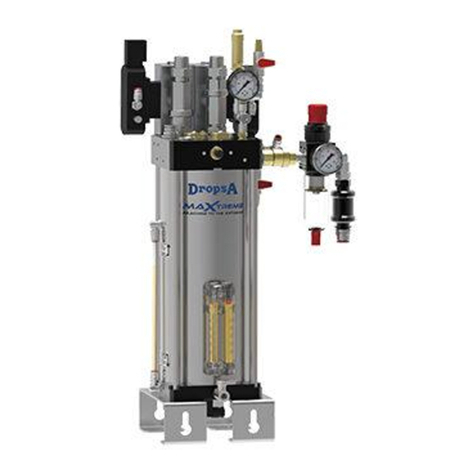
DROPSA
DROPSA MaXtreme Operation and maintenance manual

ABB
ABB VM1 instruction manual

Peri
Peri UP Flex Stairs 75 Instructions for Assembly and Dismantling

TSI Instruments
TSI Instruments TG-80 Operating instruction
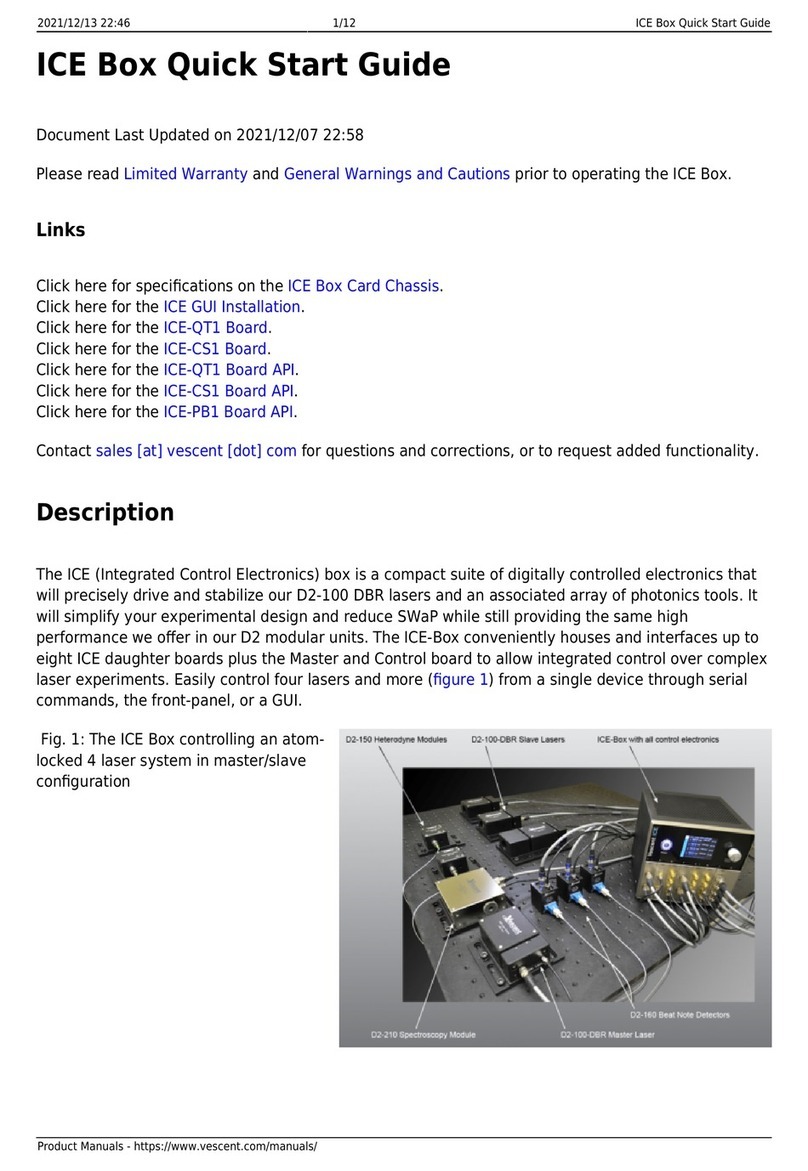
Vescent
Vescent ICE quick start guide
